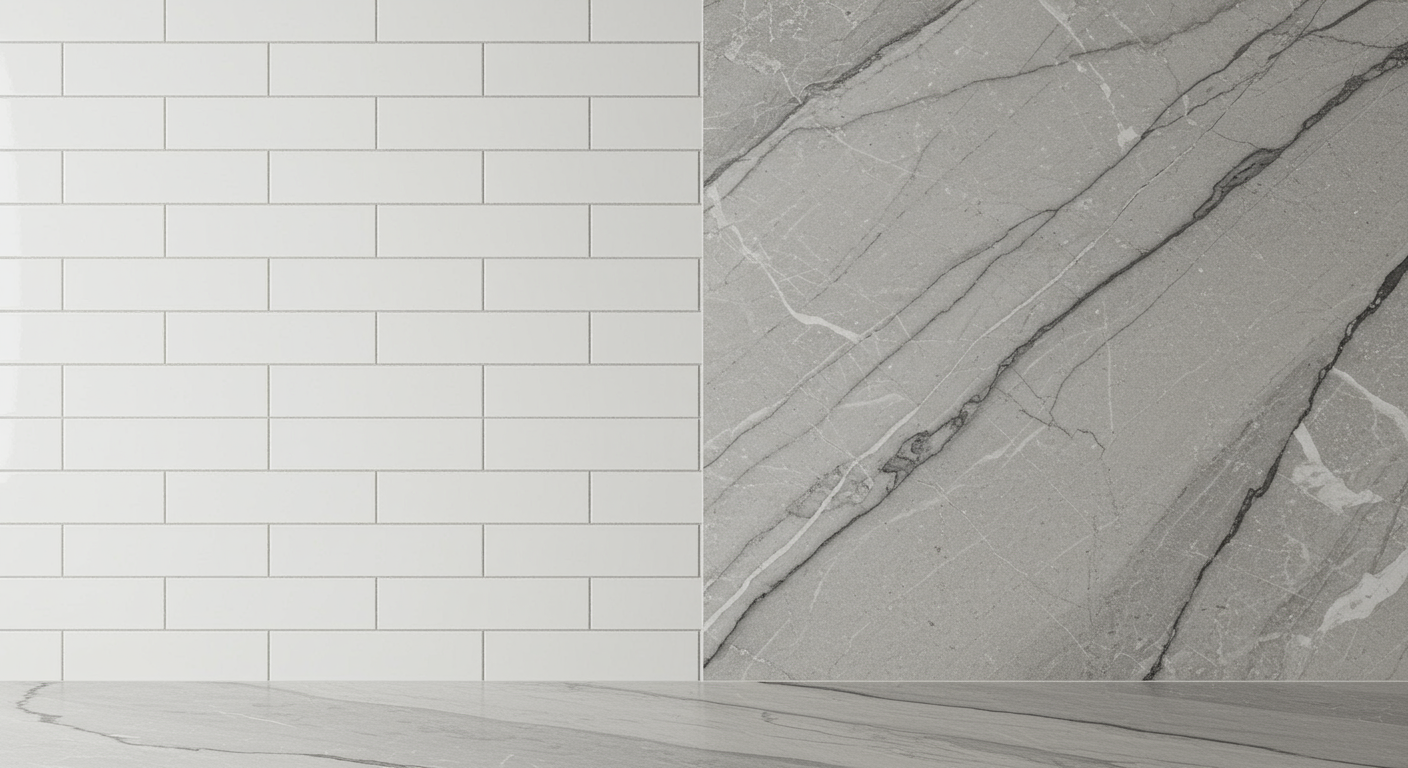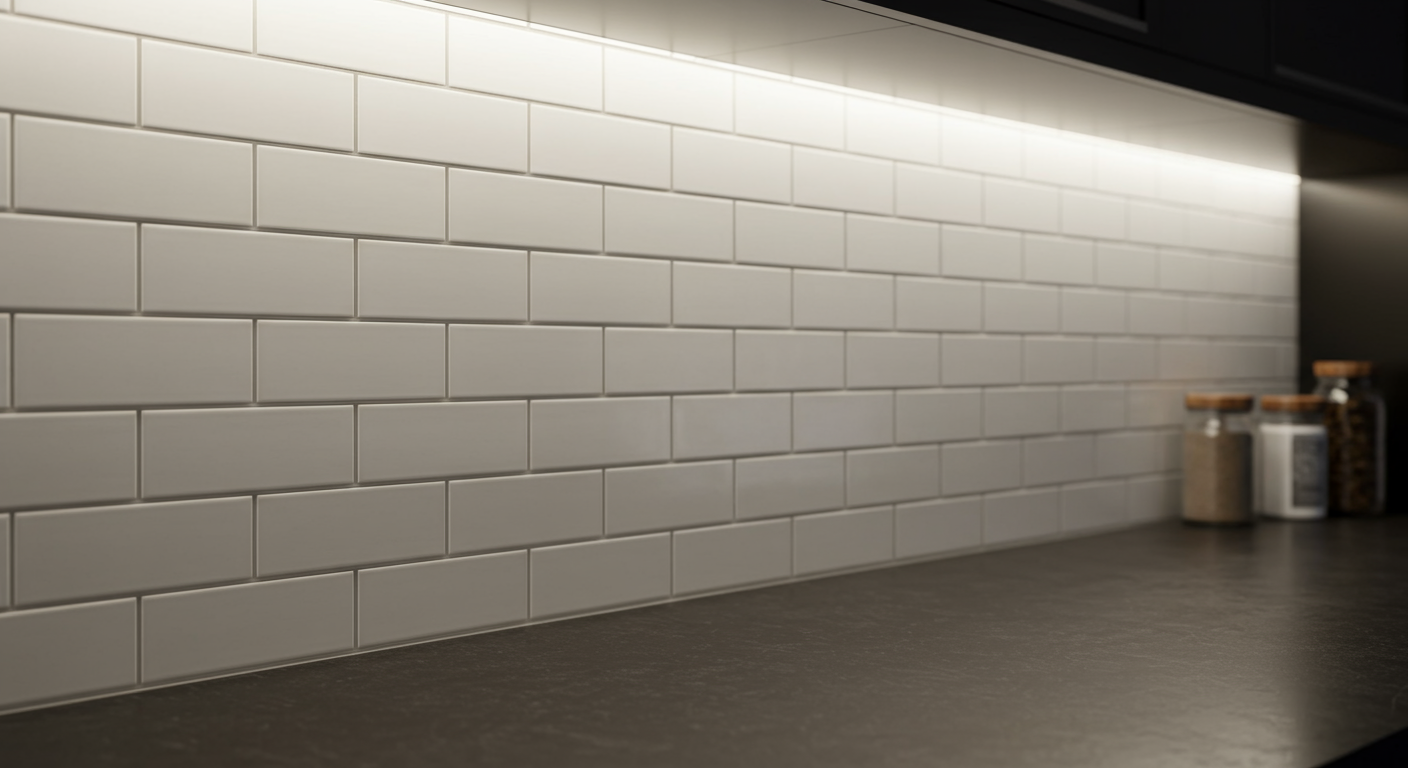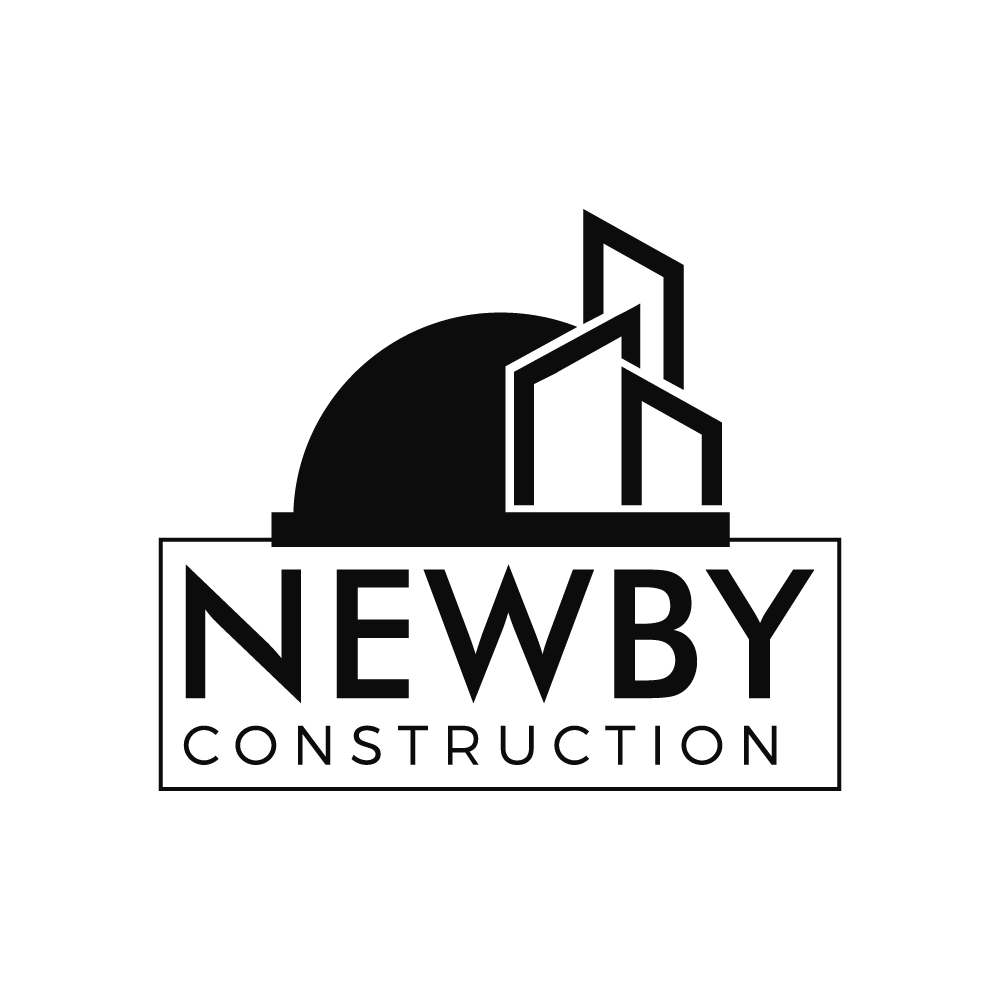
Choosing a kitchen backsplash changes the whole feel of your space—almost as much as counters do. The classic choice is subway tile; the modern move is large‑format tile. Both look great. They just do different jobs visually and practically. Here’s a clear, human take to help you pick with confidence.
The Case for Subway Tile

Subway tile earned “timeless” status for a reason. Its simple 3x6 profile, soft sheen, and flexible patterns create a clean, classic backdrop that works in traditional, transitional, and modern kitchens alike. Go classic white, lean into color, or switch the layout—offset, vertical stack, or herringbone—to make it feel fresh.
Pros: Timeless look, broad color/finish options, more budget‑friendly, DIY‑able.
Cons: More grout lines to clean; basic white in a straight lay can read flat without contrast or texture.
The Case for Large‑Format Tile

Large‑format tiles (think 12x24 and up) deliver a sleek, seamless look with minimal grout. That makes the room feel bigger and calmer—great if you love modern, minimalist, or luxury vibes. Stone‑look porcelains and textured finishes bring depth without visual clutter.
Pros: Fewer grout lines, easier upkeep, expansive, modern feel.
Cons: Trickier installation, higher material/ labor costs, walls must be very flat.
Style And Aesthetic Impact
Subway reads warm, familiar, and adaptable; it plays nicely with veined stone, butcher block, and painted cabinets. Large‑format reads crisp and architectural, letting statement counters and appliances shine. If you want the backsplash to “disappear,” go big; if you want a subtle pattern and texture, go subway.
Installation Reality Check
Subway tile is lighter, easier to cut, and forgiving—perfect for straightforward installs or capable DIY. Large‑format needs skilled prep and setting to avoid lippage and gaps; it’s typically a pro job. Either way, use quality grout and plan transitions cleanly at edges, outlets, and windows.
Cleaning, Grout, And Maintenance
More tile pieces = more grout. With subway, choose a stain‑resistant grout, seal as needed, and consider a slightly darker tone for easier upkeep. Large‑format wins on maintenance with significantly fewer grout joints, especially in lighter kitchens where splashes show.
Cost Considerations (Big Picture)
Subway tile often costs less per square foot and may save on labor—especially if you keep layouts simple. Large‑format tiles can be pricier and require meticulous installation. If you’re aiming for high impact with low fuss after install, large format can be worth the splurge.
How To Choose For Your Kitchen
Love classic, layered design? Choose subway tile and play with pattern or grout contrast.
Want quiet luxury and easy cleaning? Choose large‑format for long, uninterrupted lines.
Small kitchen or low ceilings? Subway’s scale feels friendly. Taller ceilings or open plans? Large‑format enhances the spacious vibe.
Feature counters (bold stone, heavy veining)? Large‑format keeps focus where you want it. Painted cabinets that need texture? Subway adds the right rhythm.
Conclusion
There’s no wrong answer in the subway tile vs large‑format kitchen backsplash debate—only the right fit for your style and routine. Subway delivers timeless texture with flexible patterns and approachable costs. Large‑format delivers sleek simplicity with minimal grout and a modern edge. Match the look to how you live (and clean), and you’ll land on a backsplash that makes your kitchen feel finished, intentional, and unmistakably yours.


